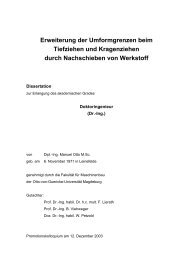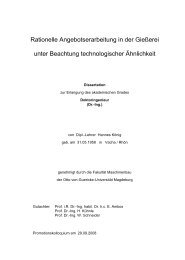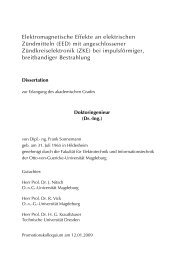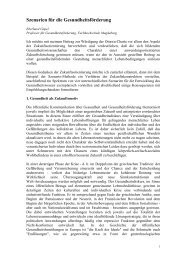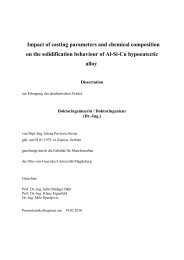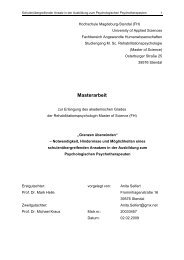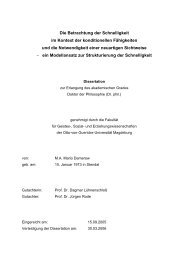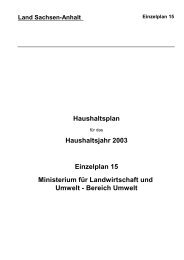Chapter 1
Chapter 1
Chapter 1
Create successful ePaper yourself
Turn your PDF publications into a flip-book with our unique Google optimized e-Paper software.
was actually higher than that for the early part of the 1980s. surpluses of 0.7 percent and 0.8 percent of GDP, respec-<br />
Expenditures on goods and services were maintained at tively, were achieved.<br />
about 3.5 percent of GDP during 1988-93. Within this cat- For a complete analysis of the sustainability of the fiscal<br />
egory, more emphasis was given to operation and mainte- deficit, not only information on the central-government<br />
nance outlays, especially for infrastructure. Subsidies and deficit is required but also information on the consolidated<br />
transfers have declined from 7.5 percent of GDP in 1986 to nonfinancial public sector (which consolidates the central<br />
5.7 percent of GDP in 1993, with temporary increases in government with local government, social security, and non-<br />
1989-90 to compensate for two years of drought and high financial public enterprises) and on the consolidated total<br />
international cereal prices. Transfers to public enterprises to public sector (which adds to the first consolidation the Central<br />
cover their operating losses have declined but seem to be Bank and public banks). Unfortunately, relevant data on pubstill<br />
large (although more detailed data on the breakdown of lic enterprises and banks are not readily available. However,<br />
current transfers to public enterprises is needed for an there are some indications that the public enterprise, public<br />
unequivocal conclusion). bank sector is potentially a source of fiscal disequilibrium.<br />
It is encouraging that government direct investment saw Data for 121 of the estimated 200-250 public enterprises,<br />
its share in GDP, after a significant decline in 1987-88, in 1992, show a deficit of 6.8 percent of GDP out of total revrecover<br />
to an average of 4.4 percent in the early 1990s. This enue of 34.6 percent of GDP (see chapter 2, section on pubis<br />
important because the provision of public infrastructure lic sector activity and table 2.1). Regarding the public sector<br />
is vital to ensure high productivity of capital, which in turn banks, the 1993 audits show that they have a significantly<br />
produces high rates of economic growth. Capital transfers higher proportion of non performing loans as a share of their<br />
and net lending declined sharply from 1986 to the present, portfolio than the private banks. To a large extent, the diffrom<br />
5.9 percent to 1.8 percent of GDP If this means that ference in nonperforming loans can be explained by the pubpublic<br />
enterprises are becoming less dependent on govern- lic banks' exposure to loss-making public enterprises and<br />
ment support and are seeking to finance their investments because of the public sector banks' efforts (and obligation)<br />
on competitive domestic and foreign financial markets, then to follow/implement government development programs<br />
the fall of capital transfers and net lending is a very healthy over the past three decades. The situation is improving, as the<br />
development. However, if some of these transfers and lend- share of nonperforming loans as a percentage of assets<br />
ing are now provided by commercial banks or if public decreased in 1993 over 1992 and is anticipated to improve<br />
enterprises are deteriorating as result of low replenishing again in 1994 (the latter will be confirmed when all the 1994<br />
investment, the current fall of capital transfers and net lend- audits are completed and analyzed.<br />
ing may only represent a fiscal burden for the Government Deficit financing has changed considerably since 1986.<br />
in the future. The share of the budget deficit financed from foreign<br />
sources fell from an average of about 55 percent in the first<br />
Fiscal deficit half of the 1980s to about 30 percent in 1987-93 (table<br />
SA.2). Correspondingly, the share of domestic financing of<br />
In the period from 1986 to 1993, the central government FIGURE 1.6<br />
deficit has ranged from 2.4 percent to 5.5 percent of GDP Fiscal balance<br />
(figure 1.6 and table SA.2). The budget deficit was highest Percent of GDP<br />
in the years 1989, 1990, and 1991. In 1989, this was due to 45 1 I"f bQicel,.<br />
the 1988-89 drought (the deterioration of the budget bal- 40 ,.° .<br />
ance was attenuated by drought-related grants); and in 1990 :' '- -<br />
and 1991, to the Government's attempt to mitigate the ,3<br />
adverse economic impact of the Gulf crisis. Because of the<br />
appropriate management of the fiscal balance by the<br />
30<br />
1<br />
* '-- 4-5<br />
-5<br />
_<br />
/<br />
-6 "a0 bbnce<br />
Tunisian authorities, these increases in the budget deficit 5 Ta rerenum -7 Vr-d )<br />
remained transitory. As a matter of fact, since 1991 the bud- 1980 1985 1990 1980 1985 1990<br />
get deficit has been declining, and in 1992 and 1993 primary Source<br />
Wbrd Bank caulation; data from Minisby of Economic Devekpment.<br />
MACOECONOMIC POLICY 11




